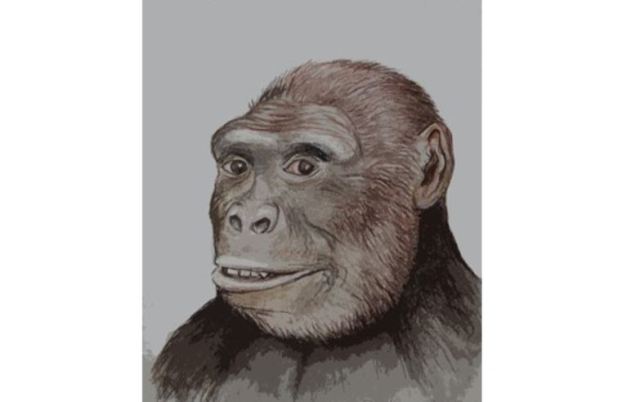In-depth research by an international team of scholars of two roughly 7.2-million-old pre-human fossils discovered in Bulgaria and Greece demonstrates that the split of the human lineage occurred in the Balkans, and not in Africa, as conventionally thought.
The research team includes scholars from Germany, Bulgaria, Greece, Canada, France and Australia.
It is headed by Professor Madelaine Boehme from the Senckenberg Center for Human Evolution and Palaeoenvironment at the University of Tuebingen and Professor Nikolai Spassov from the Bulgarian Academy of Sciences, who is the Director of the National Museum of Natural History in Sofia.
The team’s research has now outlined a new scenario for the beginning of human history by demonstrating that the common lineage of great apes and humans has split several hundred thousand years earlier than hitherto assumed.
The researchers have reached their conclusions based on the study of two fossils of Graecopithecus freybergi – a 7.24-million-year-old upper premolar discovered in Azmaka, an area near Chirpan in Southern Bulgaria, and a 7.175-million-year-old lower jaw found in Pyrgos Vassilissis, today in metropolitan Athens, Greece.
Their findings have been published in two papers in the journal PLOS ONE, “Potential hominin affinities of Graecopithecus from the Late Miocene of Europe" and “Messinian age and savannah environment of the possible hominin Graecopithecus from Europe", announced the University of Toronto, as cited by Phys.org.
Balkans, Not Africa
The researchers have investigated two fossils of Graecopithecus freybergi from Bulgaria and Greece with state-of-the-art methods and came to the conclusion that they belong to pre-humans, demonstrating that the split of the human lineage occurred in the Eastern Mediterranean and not – as customarily assumed – in Africa.
The lower jaw of the 7.175 million year old Graecopithecus freybergi (El Graeco) from Pyrgos Vassilissis, Greece (today in metropolitan Athens). Photo: Wolfgang Gerber, University of Tuebingen
It is noted that, as present-day chimpanzees are humans’ nearest living relatives, the question about where the last common ancestor of humans and chimpanzees lived has been a central and highly debated issue in palaeoanthropology.
The 7.24-million-year-old upper premolar discovered in Azmaka, an area near Chirpan in Southern Bulgaria. Photo: National Museum of Natural History – Sofia
Researchers have assumed up to now that the lineages of humans and chimpanzees diverged some 5-7 million years ago and that the first pre-humans developed in Africa.
According to the 1994 theory of French palaeoanthropologist Yves Coppens, climate change in Eastern Africa could have played a crucial role.
The team analyzed the two known specimens of the fossil hominid Graecopithecus freybergi: a lower jaw from Greece and an upper premolar from Bulgaria.
They used computer tomography to visualize the internal structures of the fossils and demonstrated that the roots of premolars are widely fused.
An electron microscope image of a dust particle rounded by eolian transport. It originated in the Sahara desert and was found in 7.2 million year old sediments in Greece. Photo: Ulf Linnemann, Senckenberg Center for Human Evolution and Palaeoenvironment, University of Tuebingen
“While great apes typically have two or three separate and diverging roots, the roots of Graecopithecus converge and are partially fused – a feature that is characteristic of modern humans, early humans and several pre-humans including Ardipithecus and Australopithecus“, Prof. Madelaine Boehme from the University of Tuebingen has said.













